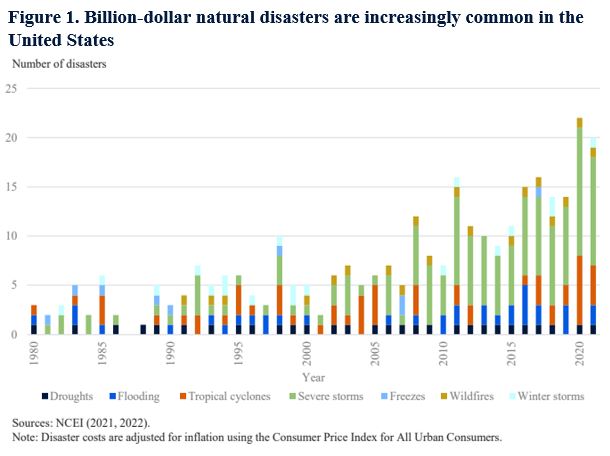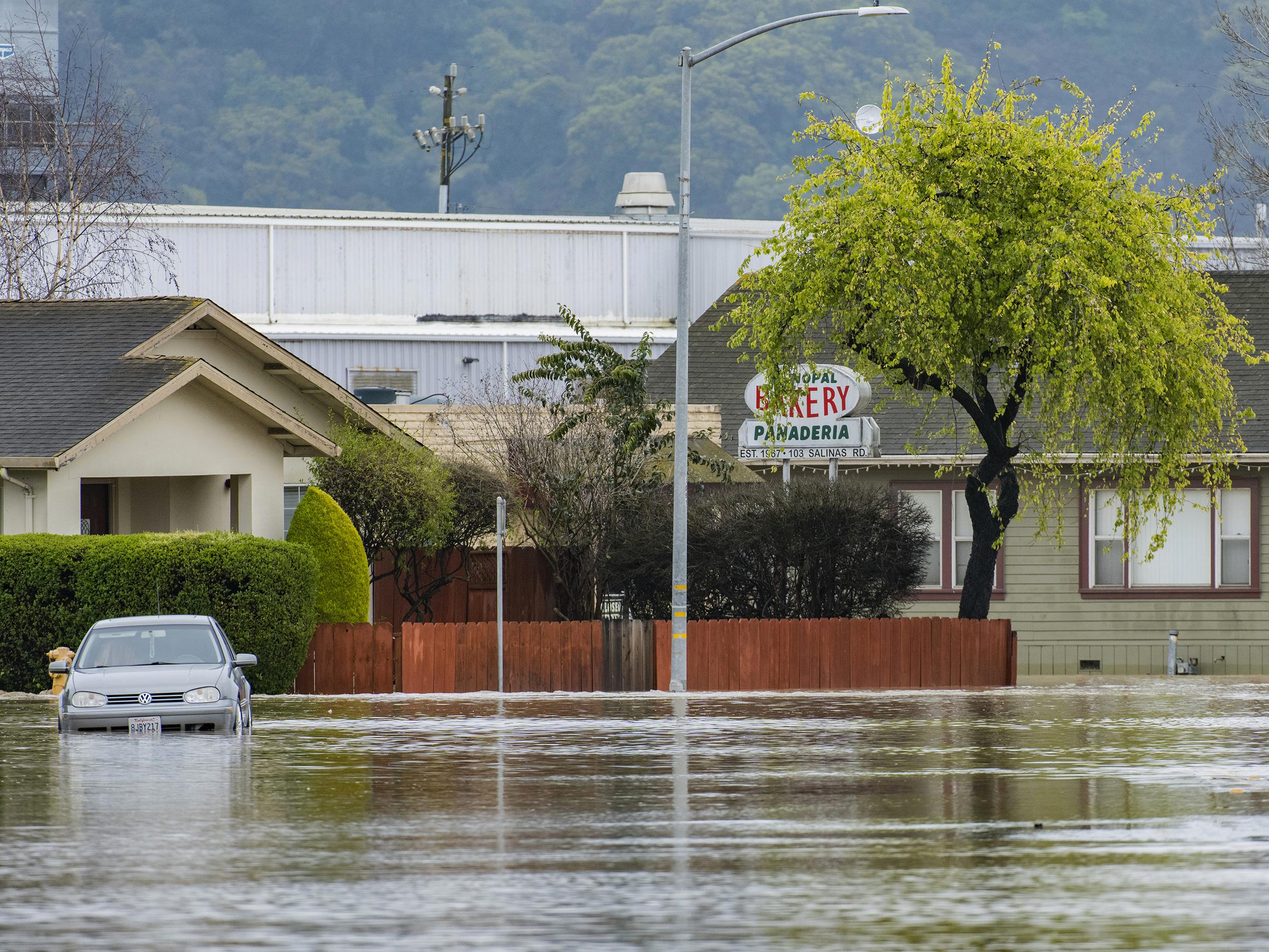Flood insurance costs vary depending on factors such as location, coverage amount, and property type. Generally, flood insurance can range from a few hundred dollars to several thousand dollars per year.
This type of insurance is crucial for homeowners who reside in flood-prone areas to protect their properties and belongings from potential flood damage. However, the exact cost of flood insurance is best determined by obtaining quotes from insurance providers that accurately consider the specific risk factors associated with your property.
By considering these factors, you can ensure that you secure the most suitable and affordable flood insurance coverage.

Credit: http://www.whitehouse.gov
Importance Of Flood Insurance
Flood insurance plays a crucial role in protecting households and properties against the devastating effects of flooding.
Coverage For Natural Disasters
One of the main benefits of flood insurance is that it provides coverage specifically for damages caused by natural disasters like floods.
Financial Protection
Flood insurance offers financial protection to homeowners by covering the costs of repairing or replacing damaged property due to flooding.
Factors Affecting Flood Insurance Costs
Flood insurance is an essential safeguard for homeowners and property owners living in flood-prone areas. Understanding the factors that influence flood insurance costs can help you make informed decisions about protecting your property. Several key factors come into play when it comes to determining the cost of flood insurance: location and risk level, property value, and coverage limits.
Location And Risk Level
The location of your property is a critical factor in determining the cost of flood insurance. Properties in high-risk flood zones, such as coastal areas or near rivers, are more likely to experience flooding and, therefore, have a higher risk level. This increased risk translates into higher insurance premiums. On the other hand, properties located in low-to-moderate-risk areas typically have lower flood insurance costs.
Moreover, the elevation of the property is also considered. Homes located above the base flood elevation may qualify for lower premiums as they are at a reduced risk of flood damage. On the contrary, if your property is situated in a designated Special Flood Hazard Area (SFHA), the cost of flood insurance will be higher due to the heightened risk.
Property Value
The value of your property is a significant factor in determining flood insurance costs. The more valuable your home is, the more it will cost to insure it. Insurance companies consider the replacement cost of the property, including factors such as the square footage, construction materials used, and any additional structures on the property. Other property features, such as basements or crawl spaces, can also impact the cost of insurance. Owning a property with a higher value means higher premiums to adequately cover potential flood damage.
Coverage Limits
Another critical factor influencing flood insurance costs is the coverage limits you select. Flood insurance policies offer various coverage options, such as dwelling coverage, personal property coverage, and additional living expenses coverage. The higher the coverage limits you choose, the higher your premiums will be. It’s important to assess your specific needs and evaluate the potential financial impact of different coverage limits. While it may be tempting to opt for lower coverage to reduce costs, it’s essential to strike a balance between affordability and adequate protection for your property.
Understanding how these factors affect flood insurance costs can help you assess the potential expenses involved in protecting your home or property. Remember, flood insurance is a crucial investment that provides financial security in the face of unexpected flood damage. Make sure to consult with an insurance professional and evaluate your specific circumstances to determine the most appropriate coverage and cost for your needs.
Typical Costs Of Flood Insurance
When considering the costs associated with flood insurance, it’s important to understand the typical expenses that come with this type of coverage. From premium rates to deductibles, the financial aspects of flood insurance can vary based on several factors such as location, property value, and the chosen coverage limits.
Premium Rates
Premium rates for flood insurance are determined by the level of risk associated with the insured property. Higher-risk areas generally have higher premium rates, while lower-risk areas may have more affordable premiums. It’s crucial to assess the flood risk in the specific location to accurately estimate the premium rates.
Deductibles
In the event of a flood damage claim, deductibles come into play. This is the initial amount that the policyholder must pay out of pocket before the insurance coverage kicks in. Deductible amounts can vary, and it’s essential for property owners to understand their deductible obligations when purchasing flood insurance.
Mitigating Flood Insurance Costs
When it comes to flood insurance, the cost can be a significant concern for homeowners and property owners. Mitigating flood insurance costs can be an essential aspect of managing the financial impact of potential flooding. By taking proactive measures to assess flood risk and make property modifications, it is possible to lower the overall cost of flood insurance.
Flood Risk Assessment
Assessing the flood risk for a property is crucial in understanding the potential insurance costs. This can involve consulting flood maps, historical data, and expert assessments to determine the level of risk. By accurately gauging the likelihood of flooding, homeowners can better prepare for insurance costs and implement strategies to mitigate those risks.
Property Modifications
Making modifications to a property can help reduce flood insurance costs. Simple measures such as elevating electrical systems, installing flood barriers, and securing foundation vents can minimize the risk of damage in the event of a flood. Implementing these modifications may result in lower insurance premiums, making them a cost-effective investment for homeowners.
Government Vs. Private Insurance Options
When it comes to protecting your home or business from the devastating effects of floods, you have two main options: the National Flood Insurance Program (NFIP) or private insurers. Understanding the differences between these two choices is essential for making an informed decision about the best flood insurance coverage for your needs.
National Flood Insurance Program (nfip)
The National Flood Insurance Program (NFIP) is a government program designed to help property owners in flood-prone areas obtain affordable insurance coverage. Administered by the Federal Emergency Management Agency (FEMA), the NFIP offers flood insurance policies that cover both personal property and building structure.
One of the key advantages of the NFIP is that it provides coverage to homeowners and small businesses in high-risk areas that might otherwise struggle to find private insurance coverage. The NFIP sets the rates for its policies based on factors such as the property’s location, the insured amount, and the type of coverage.
Here are some important points to consider about the NFIP:
- The NFIP offers coverage limits up to $250,000 for residential properties and up to $500,000 for commercial properties.
- The deductibles for NFIP policies can vary depending on the flood risk zone.
- NFIP policies have a waiting period of 30 days before they become effective, so it’s important to plan ahead.
Private Insurers
Private insurance companies also offer flood insurance coverage, which can sometimes provide additional benefits and customization options compared to the NFIP. These private insurers operate independently of the government and have the flexibility to set their own rates and policy terms.
Here are some benefits of opting for a private insurance policy:
- Private insurers may offer higher coverage limits than the NFIP, ensuring you have adequate protection for your property.
- Some private insurers offer short waiting periods or even immediate coverage, allowing you to secure protection without delay.
- Private policies may include additional features, such as coverage for temporary living expenses or replacement cost coverage for personal belongings.
It’s important to consider the potential drawbacks as well when contemplating private insurance options:
- Private insurance coverage may come with higher premiums compared to the NFIP, depending on the risk factors associated with your property.
- Private insurers might have more restrictive eligibility requirements, especially for properties located in high-risk flood zones.
- Unlike the NFIP, private insurers have the discretion to cancel policies or increase rates based on claims history or changes in flood risk assessments.
When deciding between NFIP and private insurance, it’s crucial to consider your specific needs, risk tolerance, and budget. Remember to thoroughly compare policy terms, coverage limits, and exclusions before making a final decision. Consulting with insurance agents or experts in flood insurance can provide valuable insights that help you make a well-informed choice.

Credit: http://www.capradio.org
Discounts And Incentives
Discounts and incentives can help reduce the cost of flood insurance, making it more affordable for homeowners. Let’s explore some common discounts and incentives available.
Elevation Discounts
Elevation discounts are offered to homeowners who live in areas where the risk of flooding is lower due to their property’s elevation above the base flood elevation. Such homeowners can benefit from reduced insurance premiums.
Multiple Policy Discounts
Multiple policy discounts are available for homeowners who bundle their flood insurance with other insurance policies, such as home or auto insurance. This can lead to overall savings on insurance premiums.
Budgeting For Flood Insurance
Budgeting for Flood Insurance is a crucial aspect of financial planning. By understanding the cost implications and how to incorporate them into your budget, you can protect your home and finances effectively.
Incorporating Insurance Costs Into Financial Plan
When budgeting for flood insurance, consider the potential premiums and deductibles. Evaluate your financial position to allocate appropriate funds for insurance coverage.
- Review your existing budget to determine how much you can allocate for flood insurance.
- Seek quotes from different insurance providers to compare costs and coverage options.
- Ensure that your insurance coverage aligns with your property’s flood risk level.
Emergency Fund Allocation
Establishing an emergency fund is essential to cover unexpected expenses related to flood damage. Allocate a portion of your savings specifically for such emergencies.
- Set aside a fixed amount each month into your emergency fund for flood-related expenses.
- Ensure that your emergency fund is easily accessible in case of flooding or other emergencies.
- Regularly review and adjust your emergency fund based on changes in your financial situation or flood risk.

Credit: lailluminator.com
Frequently Asked Questions For How Much Flood Insurance Cost
How Much Does Flood Insurance Cost?
Flood insurance costs vary depending on factors such as location, coverage amount, and property type. On average, annual premiums can range from a few hundred to several thousand dollars.
What Factors Influence Flood Insurance Cost?
Several factors impact flood insurance costs, including the property’s location, its elevation, building structure, flood risk zone, coverage amount, and deductible. Understanding these factors is crucial for estimating insurance expenses accurately.
Can Flood Insurance Be Affordable?
Yes, flood insurance can be affordable, especially considering the potential financial repercussions of flood damage. By evaluating various coverage options, property owners can find policies that offer suitable protection without breaking the bank.
Are There Any Cost-saving Strategies For Flood Insurance?
Property owners can explore cost-saving strategies for flood insurance, such as opting for a higher deductible, implementing flood-resistant improvements, and choosing a preferred risk policy to lower premium rates. Consulting with insurance professionals can also provide valuable insights.
Conclusion
Flood insurance costs vary depending on several factors such as location, property value, and coverage limits. It’s important to consider the potential risks and benefits before making a decision. By understanding the cost of flood insurance, homeowners can protect their valuable assets from potential financial losses.
Remember to review different insurance options and consult with experts to ensure adequate coverage for your property. Stay informed, plan ahead, and take the necessary steps to safeguard your home and peace of mind.
{ “@context”: “https://schema.org”, “@type”: “FAQPage”, “mainEntity”: [ { “@type”: “Question”, “name”: “How much does flood insurance cost?”, “acceptedAnswer”: { “@type”: “Answer”, “text”: “Flood insurance costs vary depending on factors such as location, coverage amount, and property type. On average, annual premiums can range from a few hundred to several thousand dollars.” } } , { “@type”: “Question”, “name”: “What factors influence flood insurance cost?”, “acceptedAnswer”: { “@type”: “Answer”, “text”: “Several factors impact flood insurance costs, including the property’s location, its elevation, building structure, flood risk zone, coverage amount, and deductible. Understanding these factors is crucial for estimating insurance expenses accurately.” } } , { “@type”: “Question”, “name”: “Can flood insurance be affordable?”, “acceptedAnswer”: { “@type”: “Answer”, “text”: “Yes, flood insurance can be affordable, especially considering the potential financial repercussions of flood damage. By evaluating various coverage options, property owners can find policies that offer suitable protection without breaking the bank.” } } , { “@type”: “Question”, “name”: “Are there any cost-saving strategies for flood insurance?”, “acceptedAnswer”: { “@type”: “Answer”, “text”: “Property owners can explore cost-saving strategies for flood insurance, such as opting for a higher deductible, implementing flood-resistant improvements, and choosing a preferred risk policy to lower premium rates. Consulting with insurance professionals can also provide valuable insights.” } } ] }


Leave a comment